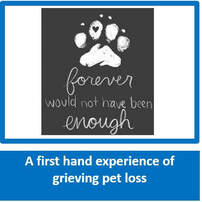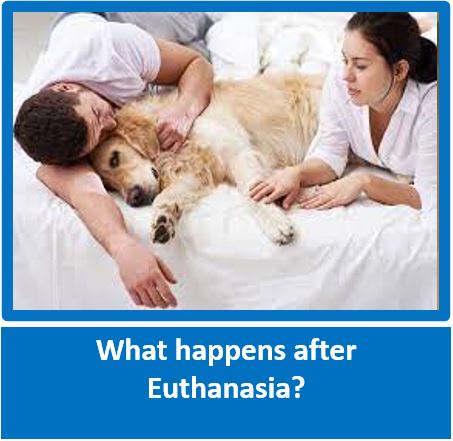Whining - Why Dogs Whine + What to do to stop this behaviour
Scotty Valadao - Canine Behaviourist - www.friendsofthedog.co.za
Scotty Valadao - Canine Behaviourist - www.friendsofthedog.co.za

Whining is a form of canine communication, and some dogs hardly whine, while others can be a real pain in the neck with constant whining. This article will explain the most common causes of this behaviour, as well as give you some tips to change the behaviour.
Pain Related
If your dog seldom whines, and suddenly starts to do so, there could well be an underlying physical condition.
Watch your dog carefully and try to see if he is sore in any area, or his weight is not evenly distributed on all 4 paws, or battling to walk up or down steps, or anything out of the ordinary. Also have a look and see if eating, drinking normally, and if elimination patterns have changed.
Check inside the mouth and the paws. Gently, from the top of the head, using the palm of your hand, very gently and slowly stroke all the wat down the back until the tail, then down the side and eventually over the whole body.
Watch your dog to see if he is showing any body language that could indicate that uncomfortable in an area. Signs could be, suddenly sitting down as you approach the hindquarters, moving away from you, licking of the lips when you touch an area that is tender, turning head away, or moving away as you touch this area.
This should give you an indication of whether he is sore in any area. We have so many more hours in a day with our dogs, and you may be able to give the vet an indication of where the tenderness is. Bear in mind, that dogs tend not to show pain as it would weaken them in the canine pack in the wild.
Demanding Behaviour
The dog that tends to whine a lot, is very often a dog that has tried this behaviour in the past, and has been rewarded by receiving attention from its person. The whinging may be accompanies by a wagging tail, looking sad, and can be followed by barking or jumping up against you or the furniture.
Unfortunately, each and every time the dog whines and receives the attention, or get what it wants, you have inadvertently reinforced the behaviour you don't work. Our dogs are clever, and figure out very quickly what works and what doesn't.
Solution
No matter how much you feel sorry for your dog, don't give in and give the dog what it wants. Rather, totally ignore the behaviour, and about a minute after it stops, call your dog and give him what he wants, whether your attention, food etc. If the whining is taking ages to stop, then fold your arms, give a loud HMMPH, turn and march through a door - remember that dogs are masters of body language, and your body language is clearly indicating that you are not impressed. Wait about 30 seconds outside the door, then walk back in totally ignoring the dog and as if nothing has happened. If the dog repeats the whining, you repeat the stomping out the door, but this time for 35 seconds. If, when you walk back in the dog is looking at you in total surprise (remember how they are so good at ignoring you at times!), carry on with what you are doing, and after about a minute, call your dog and give him what you though he wanted.
Basic Greeting Behaviour
There are some dogs that have found that whining when their person comes home, especially when they are excited to see their person, awards them additional attention, more so when a small breed and their person will tend to pick them up and give them a love.
Simply walk in the door, stand still and ignore your dog, and then give him the attention he wants when the whining stops - wait about 15 seconds. The dog will quickly figure out what behaviour he exhibits results in attention, and what behaviour does not. Remember to always be consistent - if you are not consistent (and this applies to visitors as well), you will end up reinforcing the behaviour you don't want.
If this does not work, the you can try the HMPH exercise and walking back out the door as in section above.
Anxious Greeting Behaviour
Some dogs will whine out of anxious behaviour. Often these are dogs that have come from a rescue situation or similar. The whinging is often paired with other doggy behaviour language, such as body trying to look smaller, ears back, tail between the legs, and may also be accompanied by yawning or blinking of eyes, and in extreme situation, submissive urination - other common doggy body language.
This dog is anxious, so we will not ignore him initially. Rather, as you come home, kneel down or sit in a chair by the door (you are making yourself smaller and less threatening), and leaning back a little (less invasive again), use a nice piece of food such as a piece of chicken and lure the dog closer to you. Praise quietly. reward with treat, and then quietly get up and walk into another area of the home.
If the dog is ok with its family, but performs the whining only with visitors, especially new ones, then the visitor can do the chair exercise instead, with owner praising for the dog being so brave.
With dogs like this, always to go very slowly, and, as we say in TTouch, at the dog's pace, not our own. Try to build this dogs confidence with different and fun games, such as stimulating the sense of smell (helps to balance dopamine levels) such as puzzle and scent game, small agility course in the garden, where the obstacles are very low and you slowly lure the dog over, more, slow, scenting walks, and if behaviour is extreme, please do get in a professional behaviourist, as what normally occurs is that other anxious behaviour will start to be exhibited.
Separation Anxiety
If your dog is ONLY whining when you are about to go out, or when you are out, this is a sure sign of separation anxiety. Other possible signs of separation anxiety are a dog that follows you like a shadow and gets nervous when you go towards the door, start to get ready to go out. This is a topic that needs to be dealt with in more depth, and here is an article on Separation Anxiety for you to read through.
Pain Related
If your dog seldom whines, and suddenly starts to do so, there could well be an underlying physical condition.
Watch your dog carefully and try to see if he is sore in any area, or his weight is not evenly distributed on all 4 paws, or battling to walk up or down steps, or anything out of the ordinary. Also have a look and see if eating, drinking normally, and if elimination patterns have changed.
Check inside the mouth and the paws. Gently, from the top of the head, using the palm of your hand, very gently and slowly stroke all the wat down the back until the tail, then down the side and eventually over the whole body.
Watch your dog to see if he is showing any body language that could indicate that uncomfortable in an area. Signs could be, suddenly sitting down as you approach the hindquarters, moving away from you, licking of the lips when you touch an area that is tender, turning head away, or moving away as you touch this area.
This should give you an indication of whether he is sore in any area. We have so many more hours in a day with our dogs, and you may be able to give the vet an indication of where the tenderness is. Bear in mind, that dogs tend not to show pain as it would weaken them in the canine pack in the wild.
Demanding Behaviour
The dog that tends to whine a lot, is very often a dog that has tried this behaviour in the past, and has been rewarded by receiving attention from its person. The whinging may be accompanies by a wagging tail, looking sad, and can be followed by barking or jumping up against you or the furniture.
Unfortunately, each and every time the dog whines and receives the attention, or get what it wants, you have inadvertently reinforced the behaviour you don't work. Our dogs are clever, and figure out very quickly what works and what doesn't.
Solution
No matter how much you feel sorry for your dog, don't give in and give the dog what it wants. Rather, totally ignore the behaviour, and about a minute after it stops, call your dog and give him what he wants, whether your attention, food etc. If the whining is taking ages to stop, then fold your arms, give a loud HMMPH, turn and march through a door - remember that dogs are masters of body language, and your body language is clearly indicating that you are not impressed. Wait about 30 seconds outside the door, then walk back in totally ignoring the dog and as if nothing has happened. If the dog repeats the whining, you repeat the stomping out the door, but this time for 35 seconds. If, when you walk back in the dog is looking at you in total surprise (remember how they are so good at ignoring you at times!), carry on with what you are doing, and after about a minute, call your dog and give him what you though he wanted.
Basic Greeting Behaviour
There are some dogs that have found that whining when their person comes home, especially when they are excited to see their person, awards them additional attention, more so when a small breed and their person will tend to pick them up and give them a love.
Simply walk in the door, stand still and ignore your dog, and then give him the attention he wants when the whining stops - wait about 15 seconds. The dog will quickly figure out what behaviour he exhibits results in attention, and what behaviour does not. Remember to always be consistent - if you are not consistent (and this applies to visitors as well), you will end up reinforcing the behaviour you don't want.
If this does not work, the you can try the HMPH exercise and walking back out the door as in section above.
Anxious Greeting Behaviour
Some dogs will whine out of anxious behaviour. Often these are dogs that have come from a rescue situation or similar. The whinging is often paired with other doggy behaviour language, such as body trying to look smaller, ears back, tail between the legs, and may also be accompanied by yawning or blinking of eyes, and in extreme situation, submissive urination - other common doggy body language.
This dog is anxious, so we will not ignore him initially. Rather, as you come home, kneel down or sit in a chair by the door (you are making yourself smaller and less threatening), and leaning back a little (less invasive again), use a nice piece of food such as a piece of chicken and lure the dog closer to you. Praise quietly. reward with treat, and then quietly get up and walk into another area of the home.
If the dog is ok with its family, but performs the whining only with visitors, especially new ones, then the visitor can do the chair exercise instead, with owner praising for the dog being so brave.
With dogs like this, always to go very slowly, and, as we say in TTouch, at the dog's pace, not our own. Try to build this dogs confidence with different and fun games, such as stimulating the sense of smell (helps to balance dopamine levels) such as puzzle and scent game, small agility course in the garden, where the obstacles are very low and you slowly lure the dog over, more, slow, scenting walks, and if behaviour is extreme, please do get in a professional behaviourist, as what normally occurs is that other anxious behaviour will start to be exhibited.
Separation Anxiety
If your dog is ONLY whining when you are about to go out, or when you are out, this is a sure sign of separation anxiety. Other possible signs of separation anxiety are a dog that follows you like a shadow and gets nervous when you go towards the door, start to get ready to go out. This is a topic that needs to be dealt with in more depth, and here is an article on Separation Anxiety for you to read through.





